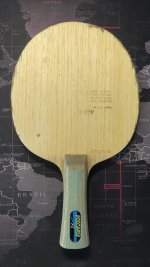This user has no status.
As long as all the ITTF logos were visible, would it be legal to have more than one rubber on a side?
Let’s say that somebody had 60% of one side of a racket covered with one rubber and the other 40% with a rubber that had a completely different characteristic. Would this be a completely legal way to frustrate the opponent, as they would have a hard time figuring out what was coming back at them?
Has anybody ever done this?
Let’s say that somebody had 60% of one side of a racket covered with one rubber and the other 40% with a rubber that had a completely different characteristic. Would this be a completely legal way to frustrate the opponent, as they would have a hard time figuring out what was coming back at them?
Has anybody ever done this?










